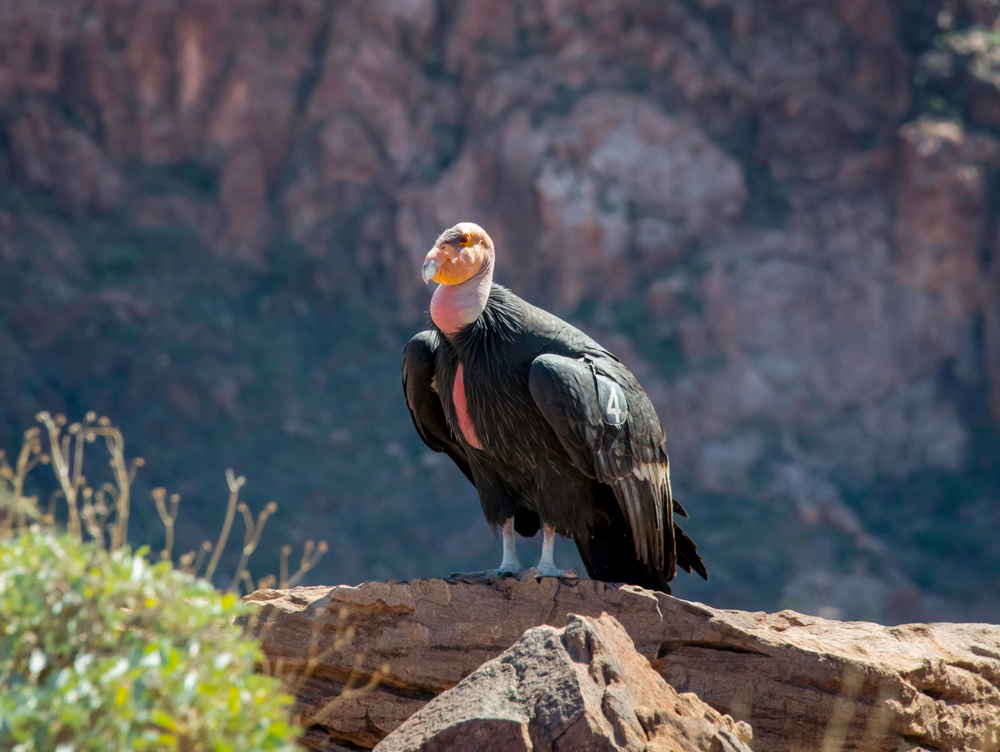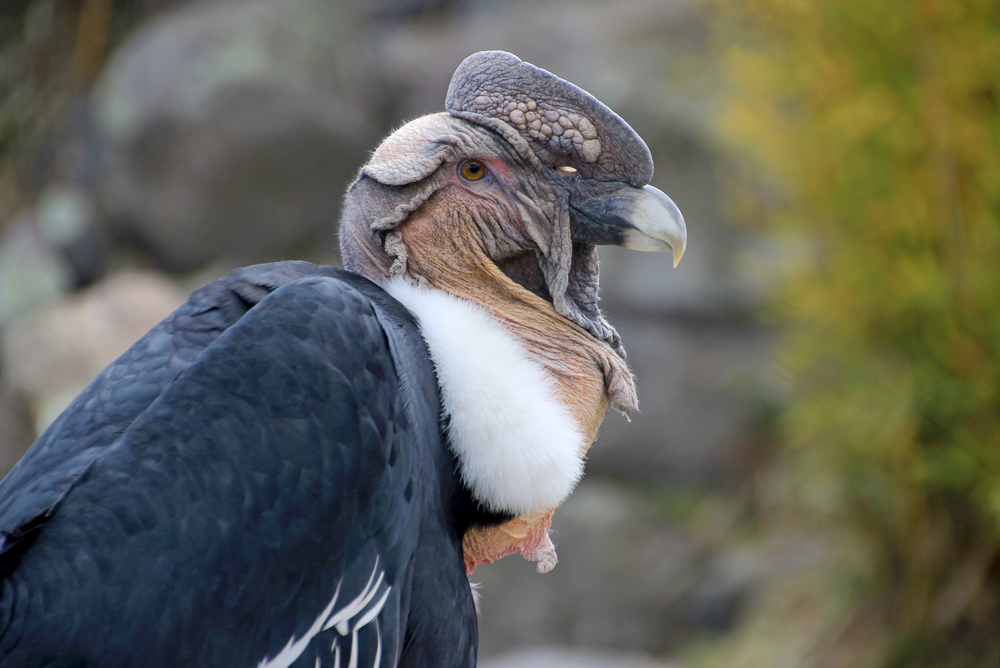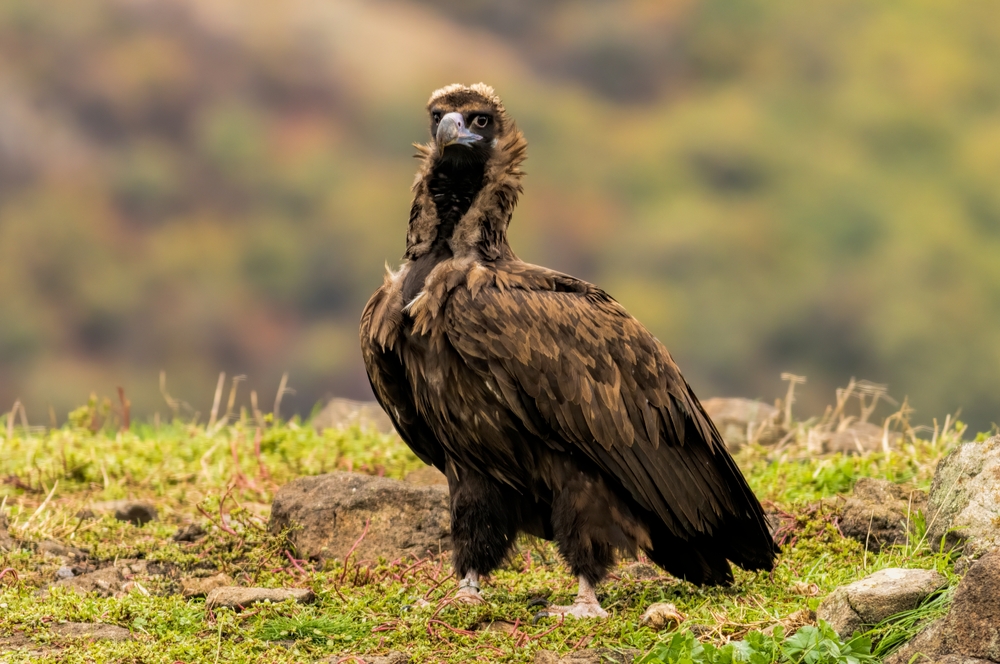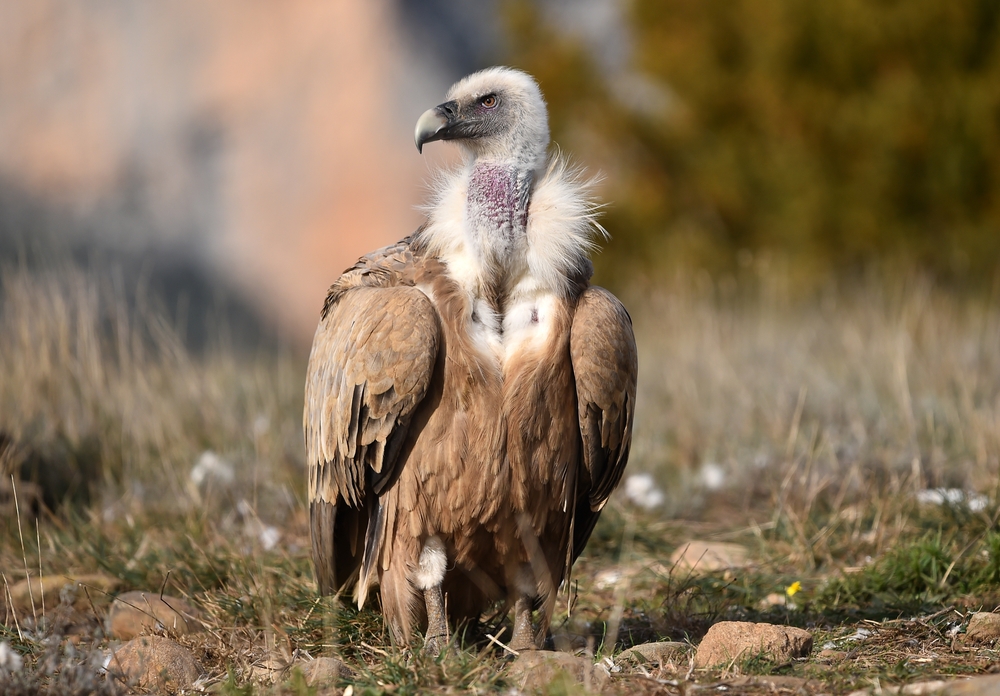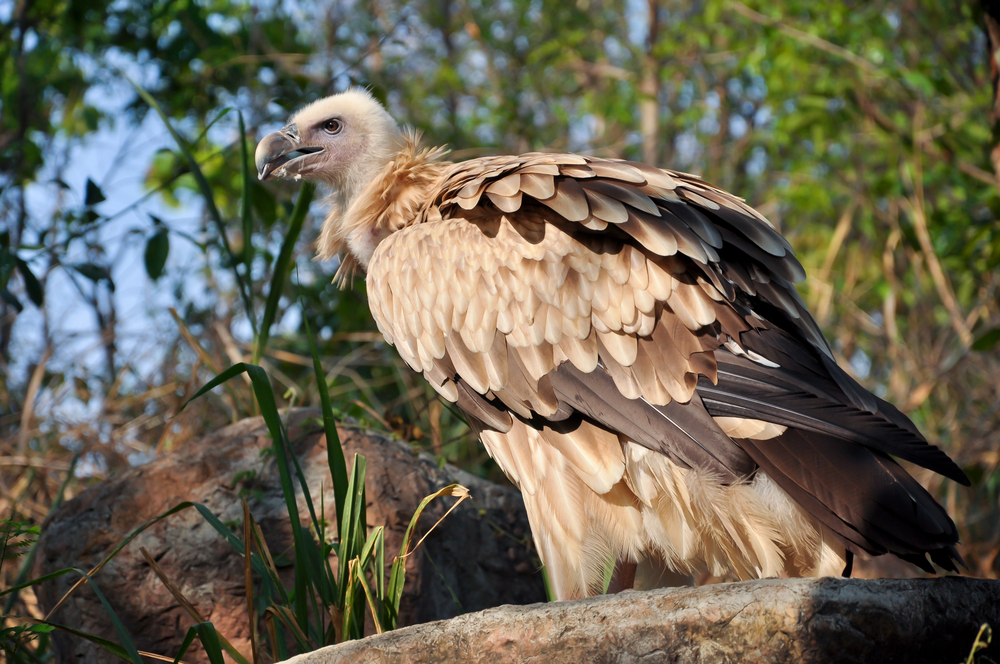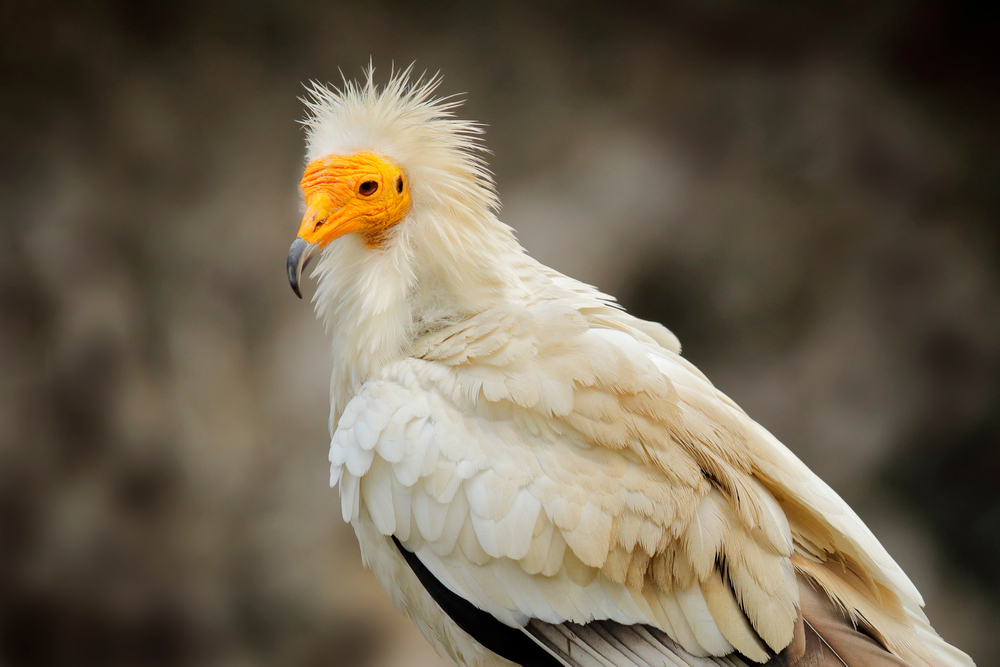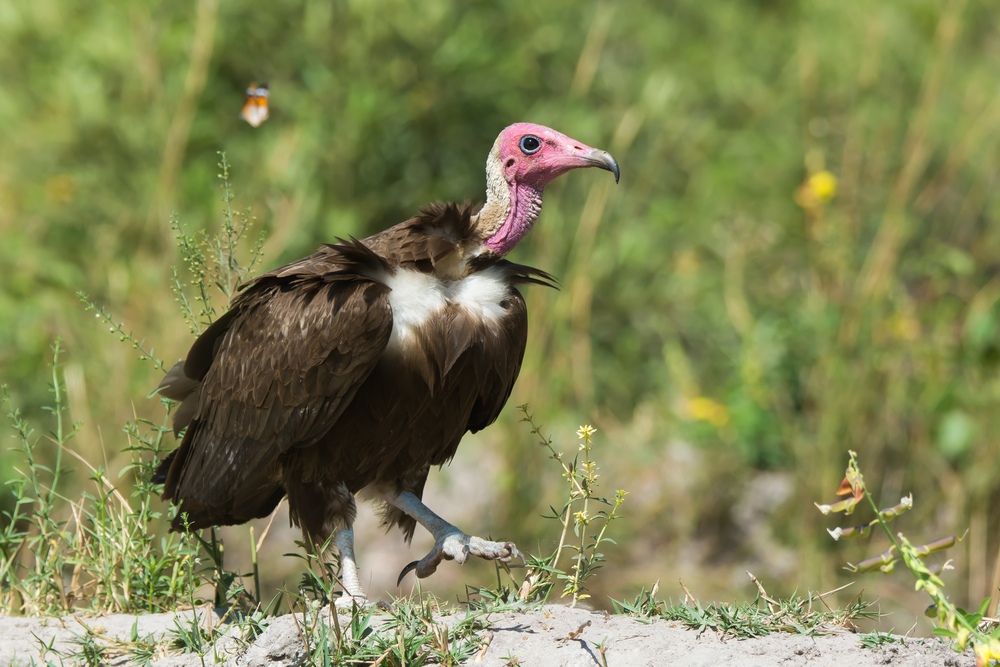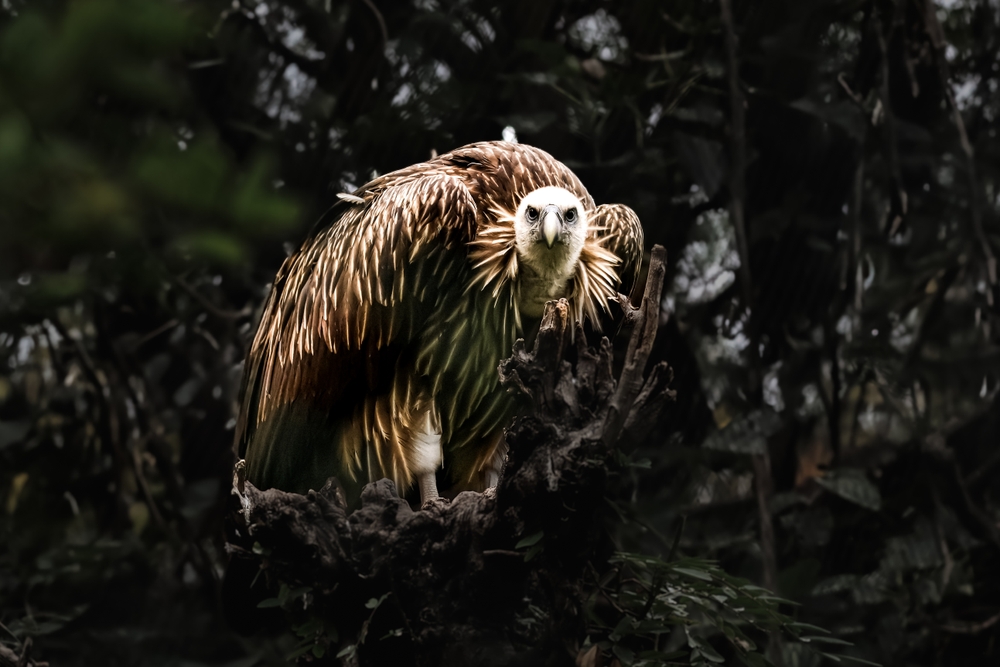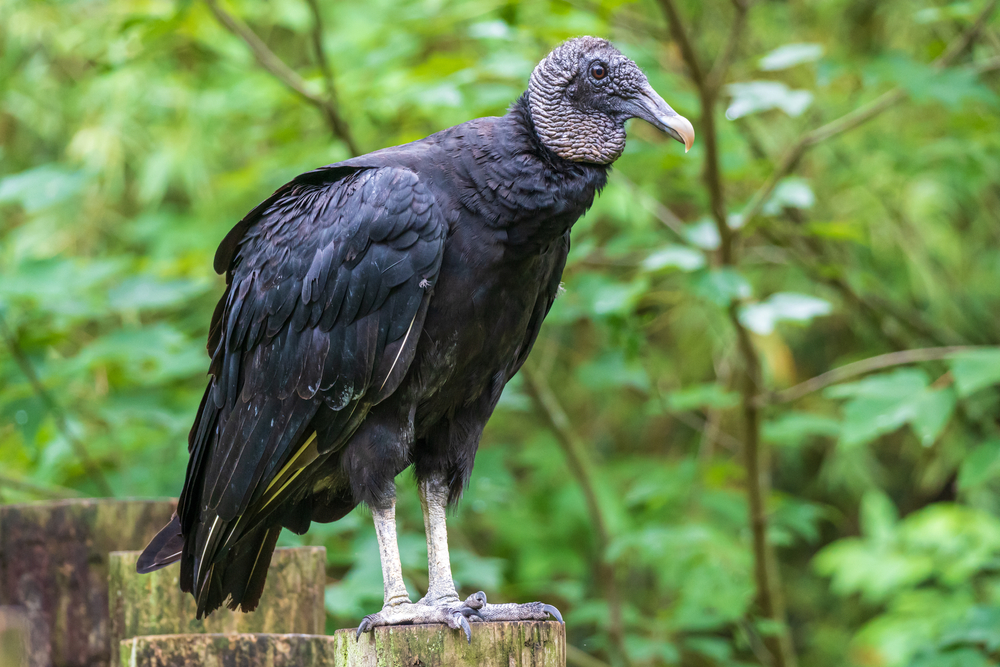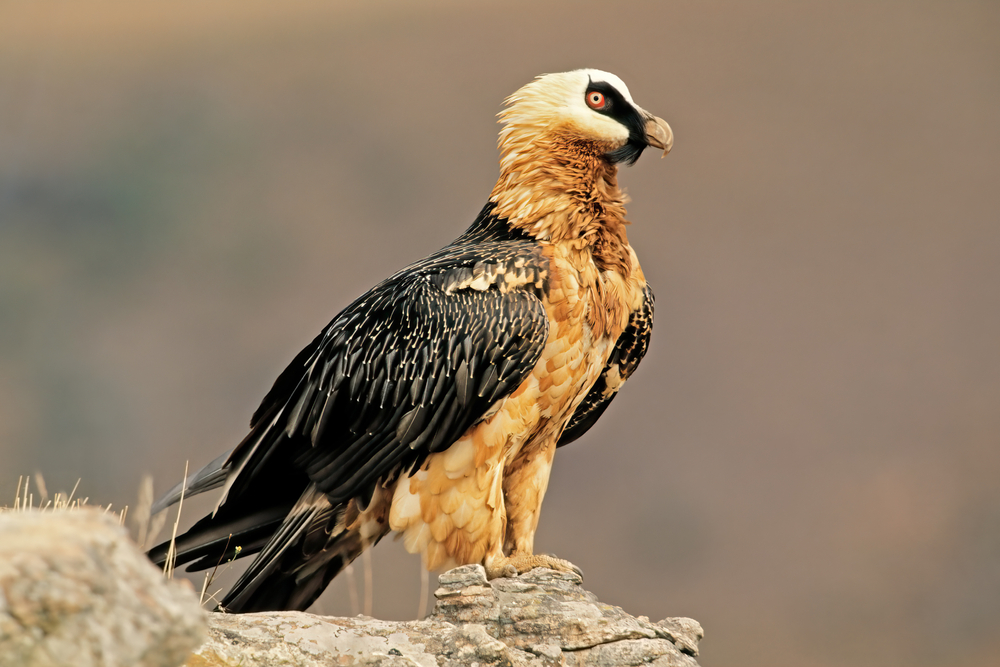The King Vulture (Sarcoramphus papa) is the sole member of its genus, but genetically it is most closely related to the condors, particularly the Andean Condor (Vultur gryphus) and California Condor (Gymnogyps californianus), within the New World vulture family.
About
The King Vulture (Sarcoramphus papa), belonging to the Cathartidae family, is one of the most striking and colorful of all New World vultures. Ranging from southern Mexico through Central America to northern Argentina, this species inhabits tropical lowland forests and savannas, where it plays an essential ecological role as a scavenger.
Large and imposing, the King Vulture measures 67–81 cm (26–32 in) in length with a wingspan of 1.2–2.7 meters (4–8.9 ft), weighing 2.7–4.5 kg (6–10 lbs). Its plumage is predominantly white with contrasting black flight feathers and tail. What sets it apart is its vividly colored bare head and neck, which display shades of orange, red, yellow, and purple, along with a distinctive fleshy caruncle above the bill. Its pale eyes give it a piercing, almost regal stare, befitting its name.
As a scavenger, the King Vulture feeds on carrion, often locating carcasses by following other vultures. Despite being less numerous than Turkey or Black Vultures, it often dominates at feeding sites due to its strength and powerful bill, which can tear into thick hides that smaller scavengers cannot penetrate. This allows it to open food sources for other species, making it a keystone participant in the cleanup of ecosystems.
Breeding occurs in secluded areas, with nests typically built in hollow logs, tree stumps, or caves. A single egg is laid, and both parents share incubation duties. The chick takes several months to fledge and relies heavily on parental care during early development.
In Mayan and other indigenous mythologies, the King Vulture was regarded as a messenger between humans and the gods. Although currently listed as Least Concern, it faces localized threats from deforestation, hunting, and habitat disturbance. With its extraordinary appearance and ecological importance, the King Vulture remains one of the most iconic scavengers of the Neotropics.
Physical Characteristics
King Vultures are strikingly distinctive birds with bold coloration and powerful features:
Head and Face: Their most recognizable trait is their bare, brightly colored head and neck, which display shades of orange, yellow, red, and purple. A fleshy orange caruncle sits prominently above the beak, giving them a unique appearance. Their eyes are pale white to cream-colored, ringed with black, which gives them a piercing gaze.
Beak: The King Vulture has a strong, hooked beak that is orange at the base and well-adapted for tearing into tough carcasses.
Plumage: Their body is predominantly white, with contrasting black flight feathers on the wings and tail. The stark difference between the pale body and dark wings makes them easy to identify in flight.
Body and Build: They are large, robust vultures with a broad chest and strong build, giving them dominance over smaller scavengers at carcass sites.
Size:
-
Length: 26 to 32 in (67 to 81 cm)
-
Wingspan: 4.3 to 6.6 ft (1.3 to 2 m)
-
Weight: 6 to 10 lbs (2.7 to 4.5 kg)
King Vultures’ physical traits—particularly their powerful beaks and commanding size—allow them to open carcasses that smaller scavengers cannot. Their vivid coloration, combined with their contrasting plumage, makes them one of the most visually striking of all vulture species.
Reproduction
The reproductive cycle of King Vultures includes distinct stages of courtship, nesting, and parental care:
1. Courtship and Pair Bonding:
King Vultures are generally monogamous, forming strong pair bonds that last for many years. Courtship often involves mutual preening, displays of wing-spreading, and vocalizations at nesting sites.
2. Breeding Season:
Breeding timing varies by region, but King Vultures typically breed once a year. They are solitary nesters, unlike some vulture species that form colonies.
3. Nesting:
Instead of building elaborate nests, King Vultures prefer to lay their eggs in natural cavities, hollow logs, caves, or secluded ground depressions. These sites provide shelter and protection from predators.
4. Egg Laying:
The female usually lays a single egg per breeding cycle. Both parents take turns incubating the egg.
5. Incubation:
Incubation lasts about 52 to 58 days, with both parents participating equally in keeping the egg warm and protected.
6. Chick Development:
The chick is born covered in white down and entirely dependent on its parents. Both parents feed the chick by regurgitating food directly into its beak.
7. Fledging and Independence:
The young King Vulture fledges at approximately 3 months of age but may remain dependent on its parents for food for several additional months until it gains full independence.
The reproductive cycle of King Vultures is slow, with a single egg and extended parental care. This low reproductive rate makes the species vulnerable to population declines when faced with environmental threats.
Lifespan
The King Vulture is a long-lived species of New World vulture, with survival influenced by its environment, food availability, and threats from human activity.
Lifespan in the Wild:
In their natural habitat, King Vultures typically live around 20 to 25 years. Their survival depends on consistent access to carrion, safe nesting sites, and avoidance of human disturbances such as habitat destruction and poisoning.
Lifespan in Captivity:
When kept in zoos or wildlife sanctuaries with veterinary care and reliable food supplies, King Vultures can live longer than their wild counterparts, often reaching up to 30–40 years.
Threats to the King Vulture:
-
Habitat Loss: Deforestation and land conversion reduce nesting and foraging areas.
-
Poisoning: Indirect poisoning from carcasses laced with pesticides or toxins meant for other animals can be fatal.
-
Human Disturbance: Hunting, deforestation, and disturbance of nesting sites affect reproductive success and survival.
-
Food Scarcity: Declines in wild mammal populations due to overhunting reduce available carrion.
Conservation efforts, including habitat protection, anti-poisoning campaigns, and captive breeding programs, are crucial to ensuring the long-term survival of this striking vulture species.
Eating Habits
King Vultures are scavengers with specialized feeding habits that make them an essential part of their ecosystem:
Diet:
They feed almost exclusively on carrion, consuming the carcasses of medium to large animals such as deer, peccaries, cattle, and other mammals. Unlike smaller vultures, their powerful beaks allow them to tear through thick hides and tough tissues that other scavengers cannot access.
Feeding Strategy:
King Vultures do not typically locate food on their own. Instead, they rely on smaller vultures—such as Black Vultures or Turkey Vultures—that soar higher and have a stronger sense of smell, to first find carcasses. Once on the ground, King Vultures dominate feeding due to their size and strength, often displacing other scavengers.
Role at Carcasses:
Their hooked beaks are specially adapted to open carcasses, creating entry points that smaller scavengers then use. This makes them an important keystone species in the decomposition process.
Social Behavior at Feeding Sites:
Although King Vultures are often solitary or in pairs, they gather in groups at feeding sites. They tend to feed first, after which smaller vultures and scavengers take their turn.
Feeding Technique:
They feed rapidly, tearing off large chunks of flesh with their strong bills. Unlike some vultures, they are less likely to feed on very small carcasses, instead preferring larger remains that sustain them longer.
King Vultures’ dominance at carcasses, combined with their ability to open hides inaccessible to others, makes them vital contributors to the cleanup and balance of tropical ecosystems.
Uniqueness
The King Vulture (Sarcoramphus papa) stands out among New World vultures due to its size, appearance, and ecological role:
Striking Appearance:
Its bald head and neck are brightly colored in shades of orange, yellow, red, and purple, with a distinctive fleshy orange caruncle above the beak—features unmatched by any other vulture species.
Powerful Beak:
The King Vulture possesses one of the strongest beaks among vultures, capable of tearing open the tough hides of large carcasses. This often makes them the first to access food that others cannot.
Dominant Scavenger:
At feeding sites, their size and strength give them dominance over smaller vultures. They frequently displace Turkey Vultures and Black Vultures, taking the first share of carrion.
Ecological Role:
By opening carcasses, King Vultures provide access for smaller scavengers that would otherwise be unable to feed. This makes them a keystone species in nutrient recycling within tropical forests.
Silent Nature:
Unlike many birds, King Vultures lack a syrinx (voice box), which limits them to only grunts and low croaks. This makes them unusually quiet compared to other scavenging birds.
Cultural Significance:
Throughout history, indigenous peoples of Central and South America have depicted King Vultures in art, mythology, and folklore, often associating them with sacred or royal qualities due to their commanding presence.
The King Vulture’s brilliant coloration, dominance at carcasses, and critical role in ecosystems make it one of the most distinctive and recognizable vulture species in the world.
Be the First to Share Photos of This Species.
FAQ’s
1. What species is closest to the King Vulture?
2. How does the King Vulture compare to other vultures?
King Vultures are medium-to-large in size, with a wingspan up to 6.6 ft (2 m). Unlike Turkey Vultures that rely on smell, King Vultures depend more on sight and the behavior of smaller scavengers to locate food.
They dominate feeding sites with their size and powerful beaks, often opening carcasses that others cannot. Their vivid coloration also sets them apart from the mostly dark-feathered vultures.
3. What national parks provide the best opportunity to see a King Vulture?
King Vultures inhabit tropical lowland forests from southern Mexico to northern Argentina. Some of the best national parks to see them include:
-
Tikal National Park, Guatemala
-
Corcovado National Park, Costa Rica
-
Manu National Park, Peru
-
Madidi National Park, Bolivia
-
Yasuní National Park, Ecuador
These parks provide excellent opportunities to view King Vultures soaring above forest canopies or perched near clearings.




































































